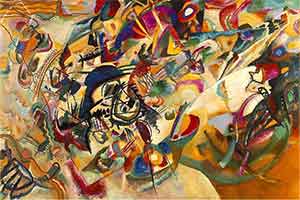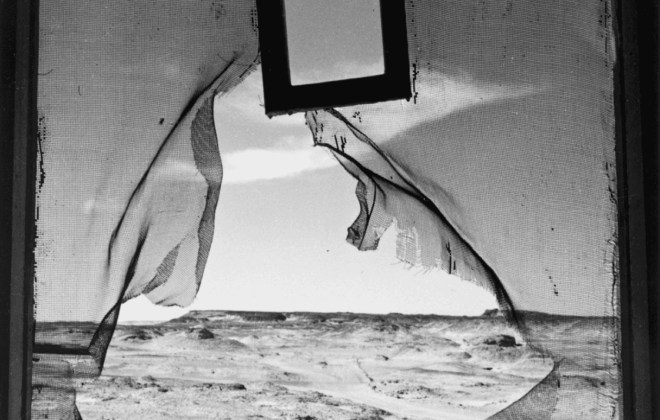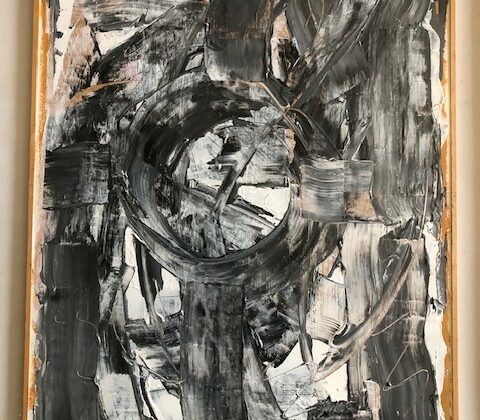Vassily Kandinsky, art of colours and abstraction

By Professor Francesco Carelli
University of Milan and Rome
The show opened at Palazzo Reale in Milan recounts the artistic and spiritual journey of Vassily Kandinsky, one of the pioneers of abstract art.
Promoted and produced by the Milan department of culture, Palazzo Reale, the Centre Pompidou, 24 ORE Cultura – Gruppo 24 ORE and Arthemisia Group, this major exhibition presenting over 80 key works by Kandinsky in chronological order is curated by art historian Angela Lampe of the Centre Pompidou.
Deeply impressed by Monet’s Haystacks series at the Impressionist exhibition of 1896 in Moscow, Kandinsky abandoned a university career to become a painter. In addition to undertaking the classic course of studies under the guidance of masters such as Anton Azbé and Franz von Stuck in Munich, he stayed at Sèvres near Paris from 1906 to 1907 (Park of Saint-Cloud, 1906). He thus developed and artistic vision encompassing numerous fields, from painting to music and theatre, in which he sought and defended what he defined in his well-known text as “the spiritual in art”.
The show is organized in sections corresponding to the major periods in Kandinsky’s life, from the early years in Germany to those in Russia and then France, providing an opportunity to discover a host of crucial works such as Old Town (1902), Windmill in Holland (1904), In Grey (1919), Yellow-Red-Blue (1925), Colourful Ensemble (1938) and Sky Blue (1940).
The exhibition opens with a surprise, plunging visitors into an environment endowed with “the power to transport them outside space and time”. The wall paintings of this initial room, recreated in 1977 by the painter restorer Jean Vidal, faithfully reflect the five original gouaches that Kandinsky produced for an octagonal room at the Juryfreie Kunstausstellung, the “jury-less show” held annually in Berlin from 1911 to 1930. The gouaches were among the works donated to the Centre Pompidou by the artist’s widow Nina in 1976.
The exhibition develops in chronological order in four sections over eight rooms.
Munich, 1896–1914
Kandinsky moved from Russia to Munich to study painting in 1896, when the city was abandoning Symbolism to become a European capital of the Jugendstil or Art Nouveau, a movement pursuing the path of art through decorative projects. Kandinsky began with small, late-Impressionist landscapes like Schwabing (1901) and works of glowing colour in tempera inspired by ancient Germanic legends and the life of old Russia (Old Russia, 1903–04). It was, however, as from 1908, during summer stays at Murnau, where his mistress Gabriele Münter bought a house, that he created the first works using bright colours to translate reality into flat, two-dimensional images inspired by Fauvism. Landscape thus became a pretext for exercises on form and investigations into the power of colour leading to the initial process of abstraction (Improvisation III, 1909).
Kandinsky wrote Concerning the Spiritual in Art in Munich, a lucid theoretical analysis of his pictorial experimentation, from the relationship between form and colour to that between colour and sound. He led the Blaue Reiter project with his friend Franz Marc, which was to hold two shows in the period 1911–12 and produce in May 1912 the celebrated Blaue Reiter Almanach, where music and visual arts were closely entwined and popular and where “primitive” arts were assigned a primary role in a radical renewal of painting. Kandinsky created his first works totally detached from reality during this period (Painting with Red Spot, 1914), translations of his inner world into abstract images.
Back in Russia,1914–21
When World War I broke out, Kandinsky was forced to return to Moscow and left nearly all the works produced in Munich with Gabriel Münter. He worked exclusively on paper in 1915 (Untitled, 1915) and only resumed painting in 1916. After marrying the much younger Nina Andreyevskaya and returning briefly to figuration, he was caught up in the aftermath of the October Revolution and occupied key roles in the new cultural institutions until 1920. While he painted little due to his official commitments, he now espoused abstract art definitively (as in the crucial work In Grey, 1919). Having come under attack from the younger and more radical constructivist avant-garde for his spiritual expressionism, he thus decided to return to Germany in 1921.
The Bauhaus years, 1921–33
Kandinsky, who gained recognition for his written work, was invited by Walter Gropius to teach at the prestigious school of architecture and art known as the Bauhaus. He took charge of the wall paintings course in 1922 and produced the huge decorations for the atrium of the Berlin Juryfreie Kunstausstellung with his students in the same year. 1922 also saw the Small Worlds portfolio of prints, a synthesis of his pre-war Expressionist works, the new and more geometric style of the Russian period and the new developments of the Bauhaus (Black Grid, 1922). The years at the Bauhaus saw close friendship with Paul Klee and the publication of Kandinsky’s other major theoretical work Point and Line to Plane (1926). The titles of his paintings – Orange (1923), On White II (1923), Yellow-Red-Blue (1925) – highlight the relationship between colours and geometric shapes. The first organic forms made their appearance in 1930. The closure of the Bauhaus in 1933 under pressure from the Nazi regime forced him to move again, this time to Paris.
Paris, 1933–44
Kandinsky arrived in Paris in 1933. While indisputably the capital of the art market, the city was also devoted to its own artists (Picasso and the Surrealists above all) and had little interest in the pure abstraction of a Russian artist with German citizenship. Kandinsky moved into a house at Neuilly-sur-Seine looking onto the river and the Bois-de-Boulogne. Enchanted by the limpid, crystalline light, he lightened his palette. At the same time, not least through the influence of his Surrealist friends Jean Arp and Joan Miró, his paintings and works on paper saw a proliferation of biomorphic forms, amoebae, creatures of the depths, embryos and insects (Colourful Ensemble, 1938; Sky Blue, 1940; An Intimate Celebration, 1942). Kandinsky plunged into this microcosm, also in order to escape from the anguish of war. He died on 13 December 1944 without seeing the end of the fighting.




